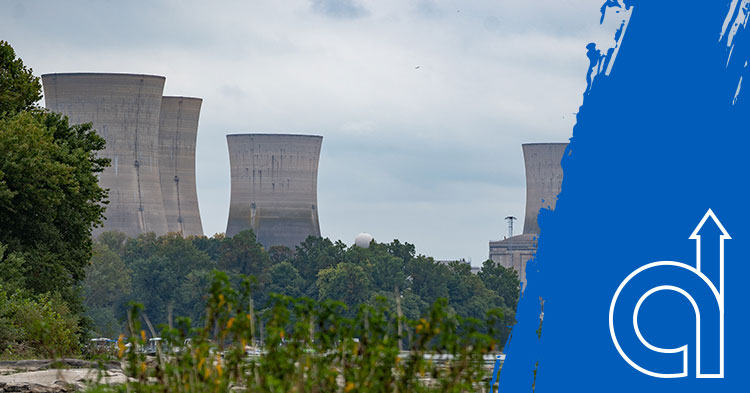The Case for Reopening Decommissioned Nuclear Plants
Reopening decommissioned nuclear power facilities, such as Three Mile Island’s Unit 1 in Pennsylvania and the Palisades Nuclear Power Plant in Michigan represents a significant opportunity to address both environmental and economic challenges in the U.S. energy sector. As the nation transitions to cleaner energy sources, the role of nuclear power—already a major contributor to low-carbon electricity—is gaining renewed attention. However, reopening shuttered facilities involves complex technical, regulatory, and financial processes, making these efforts both ambitious and impactful.
Nuclear Power’s Role in the U.S. Energy Landscape
Nuclear power remains a cornerstone of the U.S. energy mix, providing 19% of the nation’s electricity as of 2023, according to the U.S. Energy Information Administration. With 94 reactors across 54 plants in 28 states, nuclear energy offers a reliable, low-carbon alternative to fossil fuels, which still account for 60% of electricity generation. In recent years, public support for nuclear energy has grown, with a Pew Research poll indicating a rise in favorability from 43% in 2016 to 56% in 2023. This shift has created momentum for extending the operational life of older plants and exploring innovative reactor technologies.
The Cost and Challenges of Building New Nuclear Facilities
Building new nuclear facilities is a lengthy and costly endeavor, with timelines often exceeding a decade due to rigorous licensing, construction, and safety requirements. Reopening decommissioned plants, on the other hand, circumvents many of these challenges by leveraging existing infrastructure. This approach is more cost-effective and avoids the environmental impact of new construction projects, such as increased land use and resource consumption.
The Cost and Challenges of Building New Nuclear Facilities
From an economic standpoint, reopening plants bolsters regional economies by preserving and creating high-paying jobs. Nuclear plants typically employ more workers per unit of energy generated than other power sources, with some estimates putting salaries 30-50% higher than the local median. Additionally, these facilities serve as economic engines, driving commerce and infrastructure development in their communities.
Technical Hurdles in Restarting a Decommissioned Reactor
Reactivating a shuttered nuclear plant is far from straightforward though. Once a facility ceases operations, its systems begin to degrade, escalating the costs and technical challenges of restarting.Key steps in the reopening process include extensive maintenance and upgrades. Aging systems must be inspected, repaired, or replaced to meet modern safety and efficiency standards. In the case of Michigan’s Palisades plant which plans to reopen by the end of 2025, records and maintenance work continued over the years, meaning restarting the plant will be more like resuming operations after routine refueling or maintenance rather than reviving a completely inactive facility.
Regulatory Pathways and Government Oversight
For regulatory approval, companies must submit detailed plans to the Nuclear Regulatory Commission (NRC), which ensures compliance with stringent safety protocols. For Palisades to restart, one of its key challenges is securing regulatory authorization, as no U.S. nuclear plant has resumed operations after decommissioning. Since Palisades relinquished its legal right to operate when it shut down and removed the fuel, Holtec International, the company that owns Palisades, must provide the Nuclear Regulatory Commission (NRC) with comprehensive plans detailing how it will safely reopen and operate the plant. While the NRC lacks a specific framework for such cases, it has formed a dedicated panel to oversee the process.
Federal and State Financial Support for Nuclear Revival
Financial backing is also crucial. Federal incentives, such as tax credits under the Inflation Reduction Act, state-level funding, and Department of Energy loans, help offset costs. For example, the Department of Energy’s Loan Programs Office issued a $1.52 billion conditional loan to Holtec International to support the Palisades reopening.
Environmental Advantages of Repurposing Existing Infrastructure
Nuclear power plants offer unparalleled environmental advantages. They generate electricity without greenhouse gas emissions, making them vital for decarbonizing the grid. Unlike intermittent renewable sources such as wind and solar, nuclear energy provides consistent power, ensuring grid stability during peak demand periods.
Reopening plants also minimizes the ecological disruption associated with constructing new facilities. By reactivating existing infrastructure, we can expand nuclear power’s role in combating climate change while reducing the environmental footprint of energy development.
The Future of Nuclear Energy in the U.S. Energy Transition
The resurgence of interest in nuclear power marks a pivotal moment for the energy industry. By reopening facilities like Three Mile Island and Palisades, we can align economic growth with environmental responsibility, creating a sustainable energy grid that balances reliability and affordability. As we navigate the complexities of these projects, the lessons learned will inform broader efforts to modernize and expand nuclear energy’s role in a cleaner energy future.


